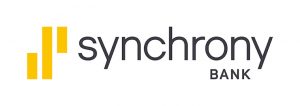Today, the vast majority in the industry have heard the term Open Banking, but what does it really mean?
The answer isn’t as simple as many people might think. In the UK and Ireland, we mostly use the term when referring to regulation introduced on the back of the EU’s PSD2. Globally, however, the term has a much wider scope—extending beyond banking and financial services to include the building of open data ecosystems to support data-driven, customer-centric offerings and ultimately generate revenue growth.
In Europe, from a regulatory perspective, the Open Banking deadline of 14 September 2019 is clearly behind us and already, significant progress has been made. According to the Open Banking Implementation Entity (OBIE) Trustee for example, over 300 third-party providers (TPPs) have entered the registration process to date and the number of the application program interface (API) calls topped 100MM in August 2019. That said, given a 35 percent growth rate in API calls since June 2018, this is only just beginning and there are still several hurdles to overcome.
While Open Banking is already transforming the banking landscape, its real goal is to create an open data ecosystem.
Most banks have partially met the requirements by offering key mandatory APIs, but in many ways, the journey hasn’t been as smooth as anticipated. There are still challenges providing all of the required APIs, as well as introducing PSD2’s Strong Customer Authentication (SCA) for e-commerce journeys. Many banks also haven’t received the fallback exemption based on the stability of APIs over a period of time, so there is still work to do.
Overcoming the hurdles
In response, the FCA has introduced a six-month adjustment period until 14 March 2020. This gives banks additional time to focus on meeting the remaining requirements, improving API performance and customer journeys, and smoothing the impact of SCA.
So, does all this mean the Open Banking journey will be completed by March 2020? Definitely not. The changes we have seen to date are just the start. After a few months spent stabilising compliance and closing gaps, the transformation focus will need to move to competitive offerings and monetisation strategies.
At root, the Open Banking regulation is the foundation for the new open data ecosystem.
To succeed in the journey ahead, I believe banks should consider six trends:
1. Aggregation apps are ‘no regrets’
Several personal financial management apps are available to retail customers. While these don’t significantly differentiate a bank’s offerings, they’ve become a must-have for financial institutions. Approaches have varied, including creating new brands within banks like ING’s Yolt, extending existing brands like Connected Money for HSBC, adding functionality to existing products like the Barclays app, or creating the new wave of non-bank fintech products direct to consumer, like the Emma app.
2. Commercial banking is on the rise
Open data offerings not only improve the SME customer journey by offering E2E solutions like invoicing, payments, tailored offerings and instant loans, but also create opportunities to monetise APIs. Xero, for example, built its E2E ecosystem for SMEs based on various partnerships.
3. Developer portals are valuable, but underestimated
While often undervalued by banks, developer portals are another must-have. They help build the ecosystem and open data landscape and are key in driving partnerships and improving customer experience.
4. Platform players will dominate
Amid the talk about the competitive threat from challenger banks, what’s sometimes missed is the competition from platform players. Nowadays, you don’t have to be a bank to offer payments or payment instalments and so new players are getting involved with new solutions. Examples include Adyen’s payments offering for airline tickets, built in cooperation with KLM.
5. Competition from digital banks and brands is growing
Since their infrastructure is usually less complex than that of traditional high-street banks, digital banks can often expose APIs and build data-driven offerings more quickly, enabling them to be more responsive to customers’ needs and generate growth.

6. Neobank/fintech alliances are stealing the limelight
A key outcome of the open ecosystem is the creation of more partnership opportunities. Emerging fintechs’ innovative solutions mean it’s often more efficient to build partnerships to achieve common goals and synergies. There are many examples in the market today.
Embarking on the journey
In summary, while the Open Banking regulation has kick-started the industry’s transformation, the open data journey is only just beginning. For traditional banks, it’s about deciding how to drive the business in a more ‘open’ fashion going forward, increase revenue growth and compete with the new players. For the newer players, it’s about building a growth strategy while innovating around offerings. Finally—and perhaps most importantly—all banks will need to identify the right partners to help them open their ecosystems, build their offerings efficiently and securely, and ultimately achieve their strategic goals.
My thanks to Tom Graham, Graham Cressey and Ewa Wojcik for sharing expertise on this topic.




